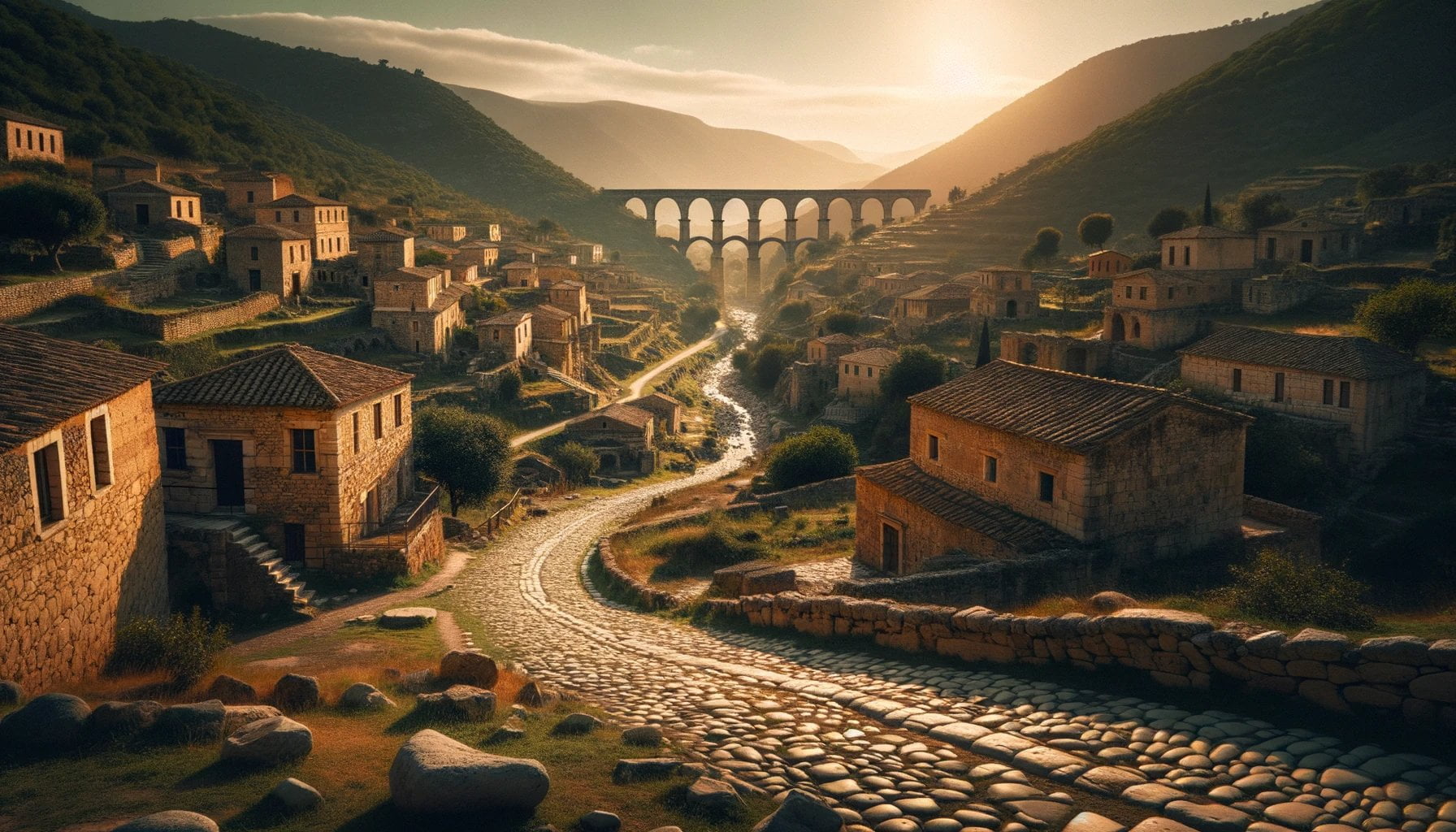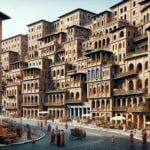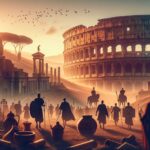Step into the captivating world of ancient Rome as we embark on a journey of exploration, unearthing the untold histories of its vibrant villages. In this article titled “Exploring Ancient Roman Villages: Unveiling Untold Histories,” we will delve into the lives of the inhabitants, uncovering their customs, traditions, and societal structures. With a seasoned archaeologist’s expertise and a passion for unraveling the mysteries of the past, we will transport you back in time to discover the hidden gems of these remarkable societies.
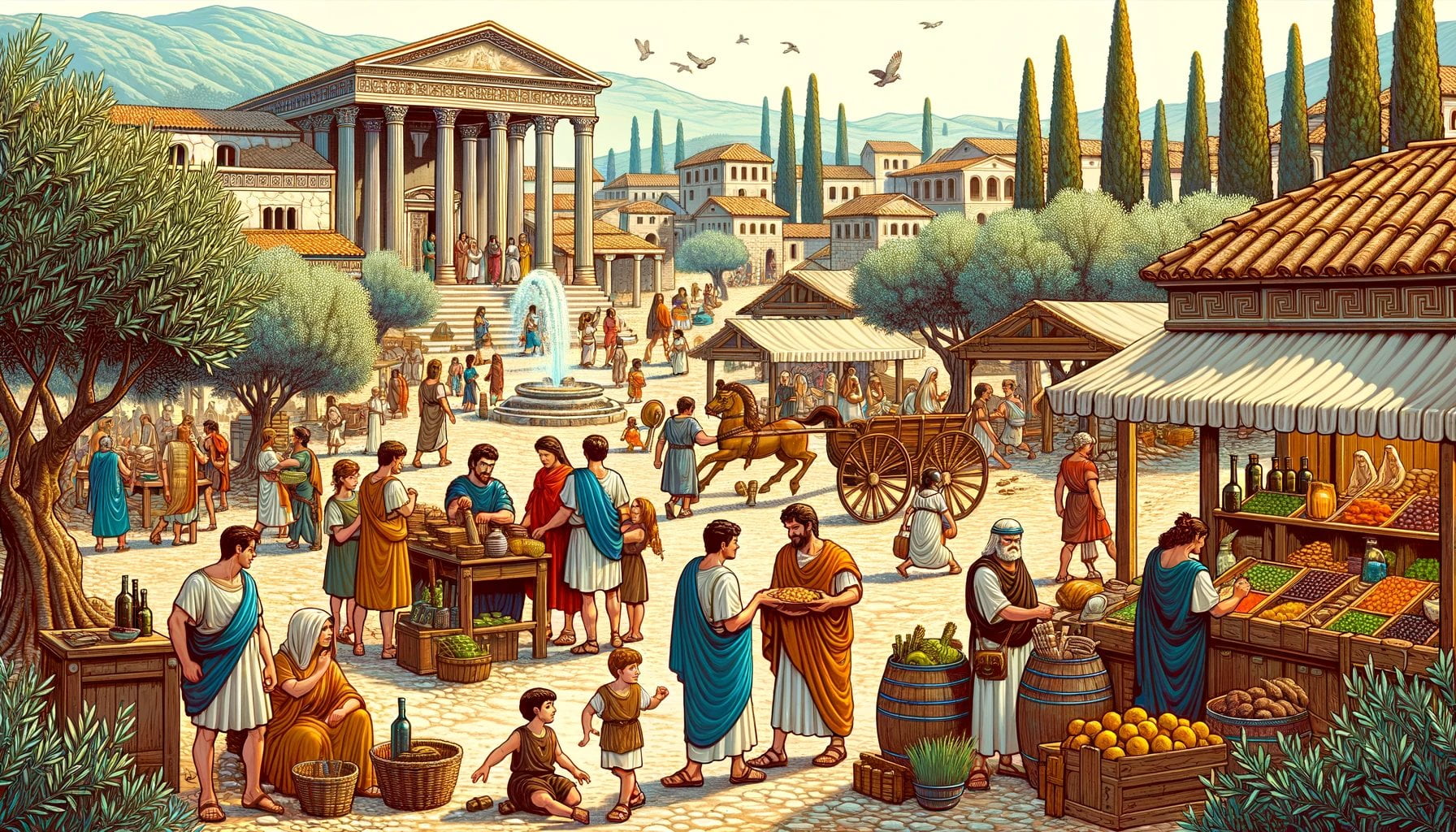
Key Takeaways:
- Villages like Rumi on the Palatine Hill and Titientes on the Quirinal Hill became part of Rome.
- Rome had four major settlements located on the Palatine, the Capitoline, the Quirinal and Viminal, and the Caelian, Oppian, and Velia.
- The Luceres living in the nearby woods supported these settlements.
- Rome’s geographical location played a crucial role in its development, as it enabled trade and commerce.
- Trade and commerce were significant factors contributing to Rome’s growth.
- The villages in Rome engaged in trade and had a central location that facilitated trade with other regions.
- The Romans followed a polytheistic religious belief system and worshipped various gods and goddesses.
- The villages in Rome were initially governed by kings but later transitioned to a republican form of government.
- The villages in Rome were productive in agriculture, craftsmanship, and trade.
Villages in Ancient Rome
In the vast landscape of ancient Rome, hidden beneath the layers of time, lie the untold stories of its villages. These humble settlements, often overshadowed by the grandeur of the city, hold within their ruins a wealth of history, customs, and traditions that offer a captivating glimpse into the lives of the ancient Romans.
Unveiling the Significance
To truly appreciate the importance of these villages, we must first understand their purpose and significance in the larger context of ancient Rome. They were not just mere outposts or peripheral settlements; rather, they played a vital role in the growth and development of the city.
The Key to Trade and Commerce
Geographical factors played a crucial role in the development of Rome, and the villages that sprouted within its vicinity. Italy, extending furthest into the sea, offered abundant opportunities for trade and commerce. These villages, strategically located, became bustling centers of economic activity, facilitating trade not only within the city but also with neighboring regions.
Stepping into Ancient Society
Stepping into these ancient villages, one can witness the foundations upon which Roman society was built. The Romans, with their polytheistic religious beliefs, worshipped various gods and goddesses. Temples dedicated to these deities were found in every village, serving as spiritual sanctuaries where the Romans would gather to offer their prayers and seek divine guidance.
Systems of Governance
These villages were not just simple clusters of homes; they were governed by systems that evolved with time. Initially ruled by kings, the villages eventually transitioned to a republican form of government. While the kings held ultimate power, the republic brought a more equitable distribution of authority, allowing the voices of the people to be heard.
Engines of Productivity
The villages in ancient Rome were not mere dormitories; they were vibrant centers of productivity. From the sprawling fields of agriculture to the meticulous craftsmanship of artisans, the villages thrived on a multitude of industries. This diversity of skills and trades ensured the prosperity of each village and contributed to the overall growth of the Roman civilization.
Exploring Village Layout and Infrastructure
To truly understand these ancient societies, we must examine the layout and infrastructure of their villages. The villages were designed to maximize their functionality, with narrow streets winding through a network of houses and shops. The architecture, although modest in comparison to the grandeur of the city, reflected the practical needs and aesthetic sensibilities of the villagers.
Examining the Socio-Economic Functions
The socio-economic functions of these villages were intertwined, creating a complex web of interdependence. From providing agricultural produce to feeding the growing population, the villages played a crucial role in sustaining the city. Craftsmen and merchants filled the streets, their wares attracting both locals and traders from faraway lands.
Unearthing the Lost Histories
As archaeologists, we have the privilege of unearthing these hidden gems of history. With meticulous research and expert fieldwork, we pull back the layers of time, piece by piece, to reveal the untold stories of ancient Rome. By studying these villages, we are able to recreate the daily lives, customs, and traditions of their inhabitants, and bring their stories to life.
In Conclusion
The villages in ancient Rome, often overlooked in favor of the grand city, hold within their ruins a wealth of knowledge waiting to be discovered. Through our efforts as archaeologists, we shed light on the lives of the forgotten, unraveling the mysteries and unveiling the untold histories of these remarkable societies. The villages in ancient Rome were not just dots on a map, but vibrant communities that shaped the destiny of one of history’s greatest civilizations.
In ancient Rome, poetry blossomed into a mesmerizing art form that captured the essence of emotions and stories. If you want to delve into the enchanting world of poetry in ancient Rome, click here to uncover its beauty and significance firsthand.
Games in ancient Rome were not just mere pastimes, but thrilling spectacles that enthralled both participants and spectators alike. Experience the excitement and grandeur of these ancient games by clicking here and immerse yourself in the thrilling world of ancient Roman entertainment.
Ancient Rome faced many invasions throughout its history, with each invader leaving an indelible mark on the empire’s legacy. Uncover the tales of bravery, conquest, and resilience by clicking here and rediscover the fascinating history of ancient Rome.
The role of a praetor in ancient Rome was of great importance, as they were responsible for upholding justice and maintaining law and order. Discover the significance and influence of praetors in ancient Rome by clicking here and journey into the realm of Roman legal system and governance.
Ancient battles in Rome were epic clashes that shaped the destiny of the empire. If you’re eager to explore the strategical feats and heroic tales that unfolded on ancient battlefields, click here to uncover the gripping stories of triumph and tragedy.
Dance in ancient Rome was not merely an art form, but a vibrant expression of joy and celebration. Immerse yourself in the captivating movements and rhythms of ancient Roman dance by clicking here and experience the vivacity and grace of this ancient cultural tradition.
Social and Economic Roles of Roman Villages
Ancient Roman villages held significant social and economic roles within the broader context of Roman society. These villages were not merely settlements but thriving communities that contributed to the growth and development of the city. In this article, we will delve into the diverse functions and responsibilities of these villages, shedding light on their social dynamics and economic activities.
The Social Fabric of Roman Villages
Roman villages played a crucial role in shaping the social structure of ancient Rome. The societal organization within these communities mirrored that of the larger Roman society, with the father serving as the head of the household and the village itself operating on the model of an extended family. Women’s rights were largely determined by the authority of their fathers and husbands, underscoring the patriarchal nature of Roman society.
Religion also played a significant role in the social fabric of these villages. Each village had temples dedicated to various gods and goddesses, serving as centers of religious devotion and spiritual expression. From household spirits to state-sanctioned deities, the religious practices in these villages reflected the deep-rooted beliefs and values of Roman society as a whole.
Economic Significance of Roman Villages
Ancient Roman villages were not only centers of productivity but also key players in driving the economy of the empire. Agriculture formed the backbone of Roman society, and the villages played a critical role in sustaining the city through food production. Independent farmers, who constituted the majority of Roman citizens, owned and cultivated the land. Their agricultural activities not only provided sustenance but also formed the economic base of the society.
Beyond agriculture, Roman villages boasted diverse industries that contributed to the economic prosperity of the empire. Craftsmanship and trade flourished within these communities, with skilled artisans producing a wide range of goods, from pottery to textiles. The villages became vibrant hubs of economic activity, supplying the city with essential products and fostering a thriving market.
Understanding the Layout and Infrastructure
To fully comprehend the social and economic roles of Roman villages, it is essential to explore their layout and infrastructure. Villages were designed with functionality in mind, ensuring that the needs of the inhabitants were met efficiently. The arrangement of houses, public spaces, and communal facilities was carefully planned to foster a sense of community and facilitate daily living.
While the villages differed in size and layout, common features can be observed. Central to the village was often a forum, which served as a public gathering place and a venue for economic transactions. Surrounding the forum, one could find essential amenities such as markets, baths, and theaters, contributing to the social and economic vitality of the village.
Key Takeaways:
- Roman villages were integral to the social and economic fabric of ancient Rome.
- The villages followed a societal structure centered around the family unit, with the father as the head.
- Religious beliefs were deeply ingrained in village life, with temples dedicated to various deities.
- Agriculture formed the economic base, with independent farmers playing a vital role in sustaining the city.
- Craftsmanship and trade thrived within villages, contributing to the economic prosperity of the empire.
- The layout of villages was designed for functionality, with a central forum and surrounding amenities.
Citation:
Sources:
1. Ancient Rome – Social, Political, Economic | Britannica
2. The society and economy of Ancient Rome – TimeMaps
Daily Life in Roman Villages
Ancient Rome, with its vast empire spanning across Europe, North Africa, and Asia, holds countless captivating stories of human existence. While the grandeur of Rome’s cities often takes the spotlight, the daily lives of its villagers are equally fascinating windows into the past. In this article, we delve into the intricacies of daily life in Roman villages, uncovering the customs, traditions, and routines that shaped the lives of these ancient communities.
Understanding the Diverse Spectrum of Daily Life in Roman Villages
The daily life of a Roman villager varied depending on their socio-economic status and location. While the poor endured arduous labor in jobs like attending Roman baths or working in taverns or as prostitutes, the more affluent enjoyed a more comfortable existence. Some villagers worked as farmers, tending to their plots of land and relying on their own labor for sustenance.
Education and Family Life in Roman Villages
Education played a pivotal role in Roman society, even in villages. Children in Roman villages attended rudimentary schools or received education from private tutors. The village community, centered around the family, was the foundation of social structure. The father served as the head of the household, responsible for providing for and protecting his family. Religion, too, was an integral part of village life, with temples dedicated to various gods and goddesses.
Marketplaces and Trade in Roman Villages
Roman villages were vibrant centers of productivity, with diverse industries catering to the needs of both villagers and city dwellers. Skilled artisans produced goods like pottery and textiles, contributing to the local economy. The layout and infrastructure of these villages were designed with functionality in mind, featuring central forums and amenities like markets and baths. These marketplaces served not only as hubs for trade but also as meeting places where villagers gathered to exchange news, goods, and ideas.
The Role of Villages in Sustaining Ancient Rome
Beyond their significant economic contributions, Roman villages played a crucial role in sustaining the city of Rome. Agriculture, the backbone of Roman society, found its roots in these villages, where crops were cultivated and livestock were raised. Villagers worked tirelessly to ensure a consistent food supply for the ever-growing population. Their skills, knowledge, and agricultural practices were passed down through generations, feeding not only the villagers themselves but also the bustling city centers.
Unearthing Untold Histories: The Work of Archaeologists
Archaeologists, armed with their meticulous research skills and expertise, have the privilege of unearthing the histories of these villages, piecing together fragments of the past and bringing their stories to life. Through exploration, excavation, and careful analysis, archaeologists paint a vivid picture of the daily lives, customs, and traditions of ancient Roman villages. Their work unravels the mysteries surrounding societal structures, economic practices, and the cultural significance of these remarkable societies.
Key Takeaways:
- Daily life in Roman villages varied depending on socio-economic status and location.
- Education and family life were integral parts of village society, with children attending schools or receiving private tutoring.
- Villages served as vibrant centers of productivity, with diverse industries meeting the needs of both villagers and city dwellers.
- Marketplaces in villages facilitated trade and served as meeting places for villagers.
- Villages played a crucial role in sustaining ancient Rome through agriculture.
- Archaeologists contribute to uncovering the untold stories of ancient Roman villages.
Sources:
– Life in Ancient Rome – HISTORY’S HISTORIES
– Daily Life in Ancient Rome – World History Encyclopedia
Legacy and Impact of Roman Villages
Key Takeaways:
- Ancient Roman villages played a significant role in shaping the legacy and impact of the Roman civilization.
- The separation of government branches, law and equality, cultural transmission and adaptation, technology and engineering, public services, urban development, and influence on culture and language are some of the key aspects that highlight the impact of Roman villages.
- The legacy of ancient Rome can still be seen in our art, architecture, technology, and culture today.
Ancient Roman villages left a lasting legacy and made a profound impact on the development of the Roman civilization. These villages were not just small settlements but vibrant centers of productivity and cultural significance. Through exploring these ancient communities, we can gain valuable insights into the lives, customs, and traditions of the people who inhabited them.
Separation of Government Branches: One of the most notable contributions of the ancient Romans was their concept of separating the government’s branches. This system ensured a balance of power and prevented any one branch from holding exclusive control. It was established in 509 BCE after the Romans deposed their king. This approach to governance, with its executive, legislative, and judiciary branches, laid the foundation for the development of modern democratic systems.^1
Law and Equality: The Romans introduced the concept that everyone, regardless of their social class, was subject to the law equally. This revolutionary idea of equality before the law influenced subsequent legal systems around the world. The Romans also pioneered trial by jury and fought for civil rights, making significant strides in ensuring justice for all.^2
Cultural Transmission & Adaptation: Rome’s policy of cultural transmission and adaptation is exemplified by their innovations in the development of the amphitheater. This symbolized their openness to borrowing and improving upon concepts and inventions from other cultures. Such cultural fusion and adaptation became a hallmark of the Roman Empire’s expansion and influence.^3
Technology & Engineering: The Romans made remarkable advancements in various fields, including engineering, sciences, arts, and architecture. Their innovative engineering feats, such as aqueducts, roads, and bridges, revolutionized transportation and infrastructure. Many modern-day inventions and concepts find their origins in Roman innovation, demonstrating the lasting impact of their technological achievements.^4
Public Servants: Ancient Rome had a well-developed system of public services, which were similar to present-day municipalities. They established the first fire brigade and other services dedicated to ensuring the welfare and safety of their citizens. These early public servants laid the groundwork for the establishment of modern public services and infrastructure.^5
Urban Development: The urban development of ancient Rome can be traced back to the contact with the Etruscans, who urbanized the small Latin village of Rome. This interaction and exchange of ideas led to the growth and transformation of Rome into a bustling metropolis. The urban planning strategies used in ancient Roman villages, such as the layout of forums, markets, and baths, inspired future city design principles.^6
Influence on Culture and Language: The legacy of the Roman Empire permeates through our society even today. It has left an indelible mark on state institutions, law, cultural values, religious beliefs, technological advances, engineering marvels, and language. Roman culture and language deeply influenced subsequent cultures and played a pivotal role in shaping the world we know today.^7
Traces in the Modern World: Despite the passage of thousands of years, the influence of ancient Rome is still present in our modern world. Traces of ancient Rome can be found in our art, architecture, technology, and culture. The Romans’ contributions have stood the test of time and continue to shape our society and civilization.^8
In conclusion, the Roman villages of ancient times have left an extraordinary legacy and made a significant impact on the development of the Roman civilization. The separation of government branches, the pursuit of law and equality, cultural transmission and adaptation, groundbreaking technology and engineering, the establishment of public services, urban development, and profound influence on culture and language are just some of the factors that highlight the enduring legacy of these ancient communities. Through the exploration and excavation of these villages, archeologists and historians unlock a treasure trove of insights into the daily lives and extraordinary achievements of the Romans. Today, we continue to be inspired by the remarkable legacy and impact of these ancient Roman villages.
References:
1. World History Encyclopedia
2. World History Encyclopedia
3. World History Encyclopedia
4. World History Encyclopedia
5. World History Encyclopedia
6. History Hit
7. Wikipedia
8. National Geographic Society
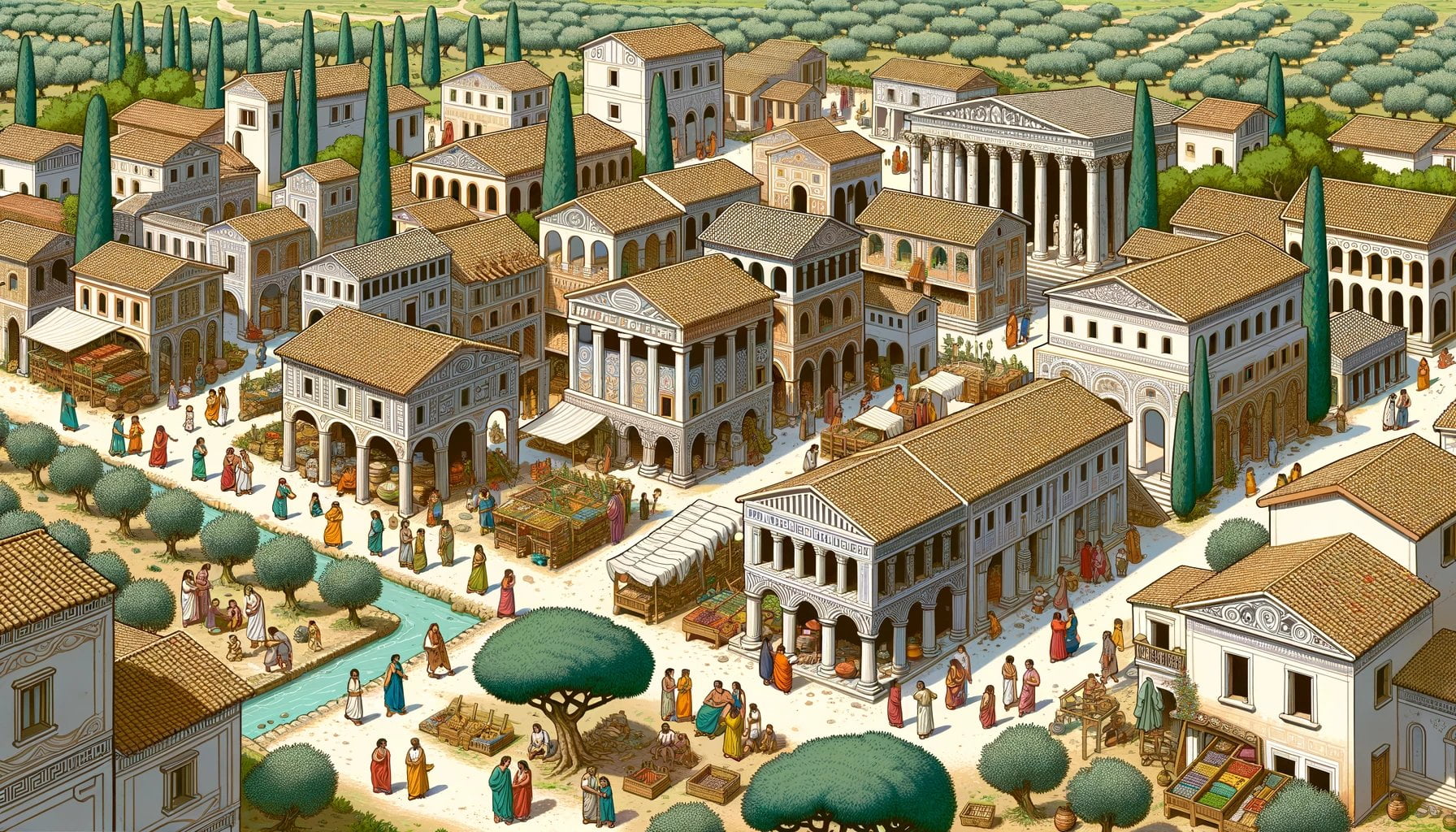
FAQ
Q1: What were the major settlements in ancient Rome?
A1: The major settlements in ancient Rome included Rumi on the Palatine Hill, Titientes on the Quirinal Hill, the settlements on the Capitoline, the Quirinal and Viminal, and the Caelian, Oppian, and Velia. These settlements were backed by the Luceres living in the nearby woods.
Q2: How did the geographical location of Rome contribute to its growth and development?
A2: The geographical location of Rome, with Italy extending furthest into the sea in a straight, consistent way, made it conducive for trade and commerce. The flow of trade and commerce in Rome contributed to its growth and development.
Q3: Who governed the villages in ancient Rome?
A3: The villages in ancient Rome were governed by a system of kings initially and later transitioned to a republican form of government.
Q4: What were the main economic activities of the villages in ancient Rome?
A4: The villages in ancient Rome were productive in various fields, including agriculture, craftsmanship, and trade.
Q5: What role did religion play in ancient Roman society?
A5: Religion played a significant role in ancient Roman society, with the Romans worshiping various gods and goddesses and having a polytheistic religious belief system.
- Unlock 6000+ words beginning with he: A comprehensive analysis - April 20, 2025
- Mastering -al Words: A Complete Guide - April 20, 2025
- Master Scrabble: High-Scoring BAR Words Now - April 20, 2025
